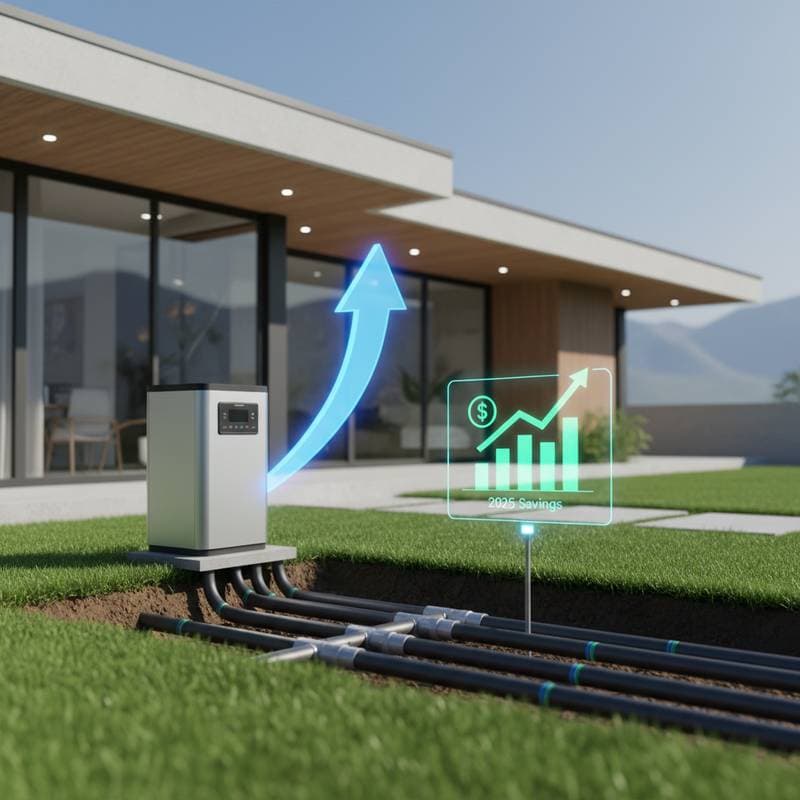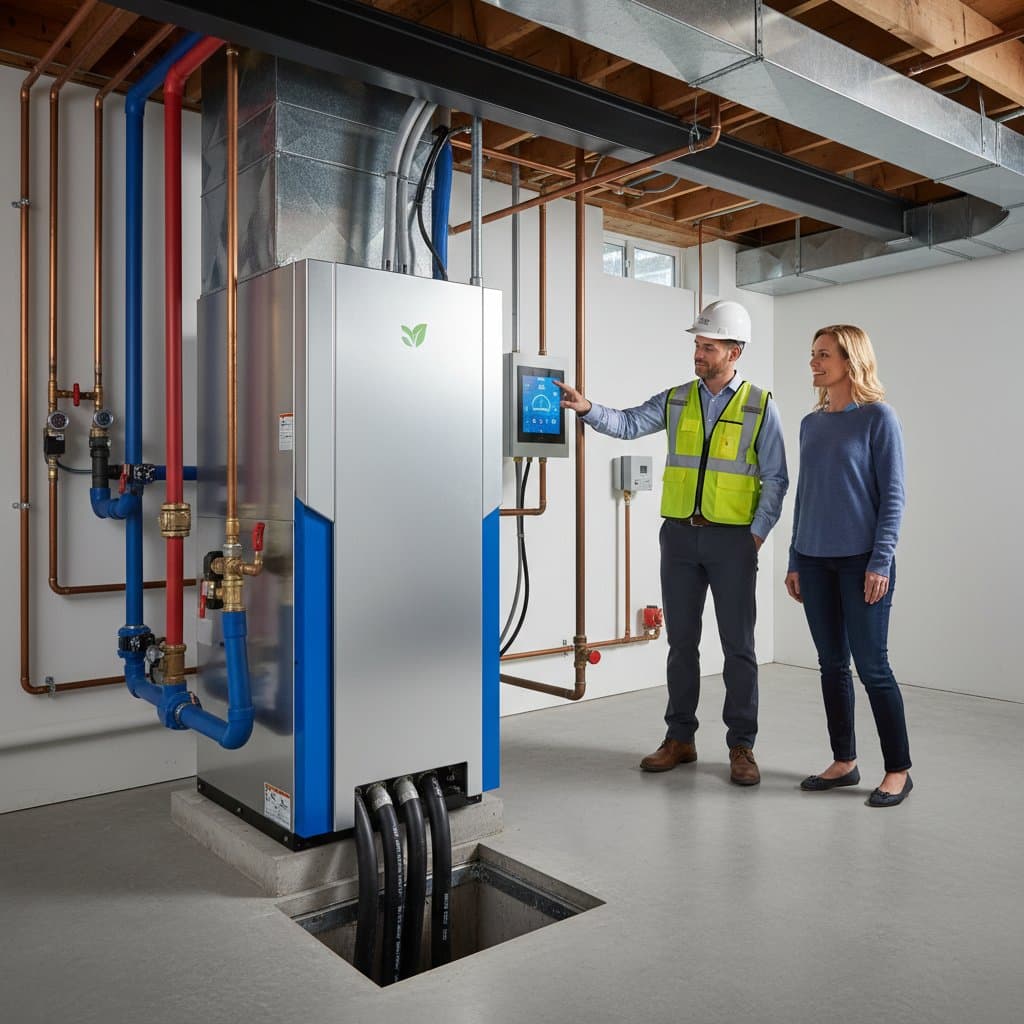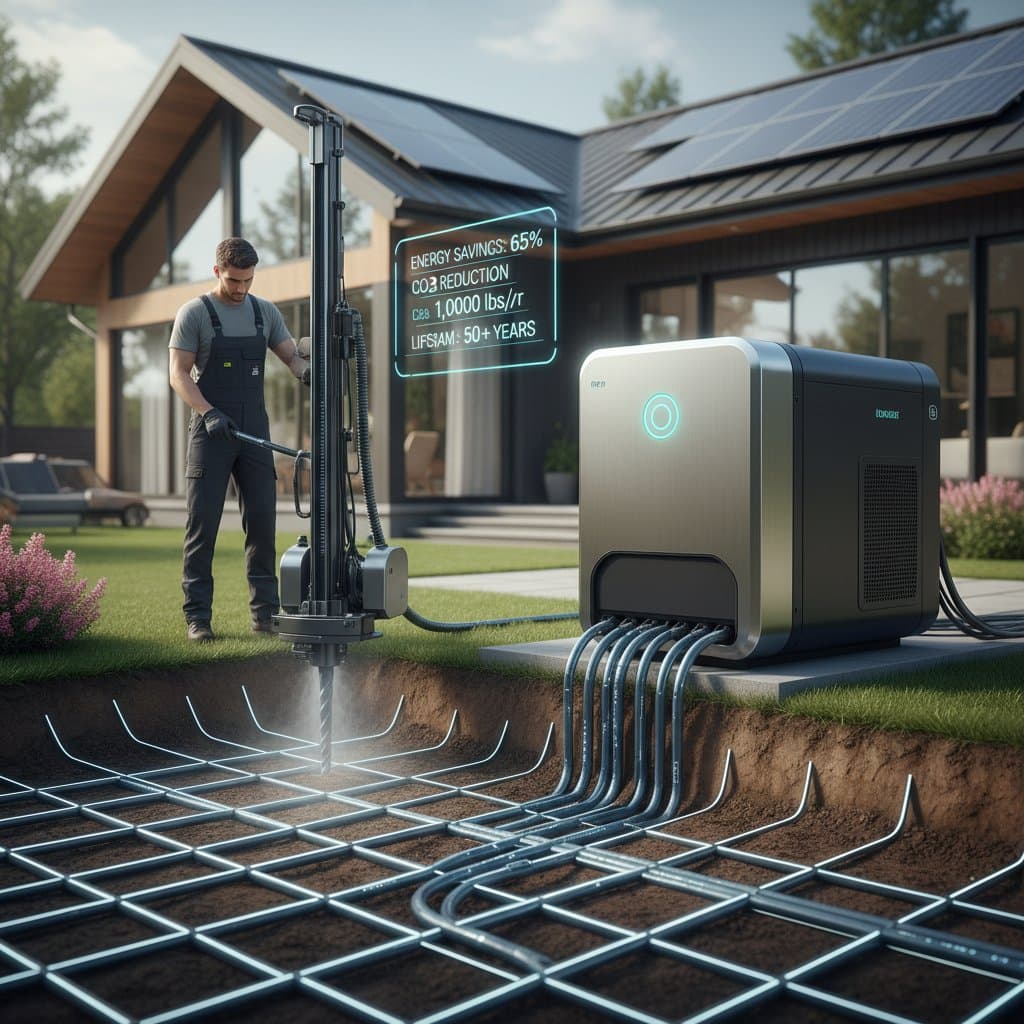Geothermal Cooling: Save 40-70% on Energy Bills in 2025
Geothermal cooling is transforming how homeowners approach comfort and efficiency, offering energy savings of 40 to 70 percent compared to traditional HVAC systems. By harnessing the earth’s stable underground temperatures, this innovative technology not only slashes utility costs but also enhances property value, improves indoor air quality, and delivers consistent performance in any climate. Though the upfront investment is higher, long-term returns and available incentives make it a compelling choice for forward-thinking homeowners.
Unmatched Comfort With a Quiet Edge
Picture stepping into your home on a blistering summer day, greeted by a cool, steady environment without the hum of an outdoor compressor or the uneven cooling of conventional systems. Geothermal cooling achieves this by tapping into the ground’s consistent temperature through buried loops of piping, filled with water or an antifreeze solution. This heat exchange process ensures your home stays comfortable without the fluctuations often experienced with standard air conditioners, all while operating in near silence.
For those prioritizing long-term comfort and a peaceful living space, this technology stands out as a game-changer in the HVAC industry, delivering results that are as subtle as they are effective.
Why Geothermal Cooling Stands Out
Traditional air conditioning units draw from fluctuating outdoor air, forcing systems to overwork and consume excessive energy during extreme heat. In contrast, geothermal systems rely on the earth’s stable subsurface temperature, which remains steady year-round, drastically cutting energy use. Industry insights reveal that homeowners can reduce cooling costs by 30 to 60 percent, depending on their region and system setup. While installation costs may be two to three times higher than conventional units, often ranging from $20,000 to $30,000, the savings on utility bills and maintenance typically recover the difference within 5 to 10 years.
Moreover, with indoor components lasting over 20 years and ground loops enduring up to 50 years, the investment proves durable and cost-effective over decades, offering peace of mind alongside financial benefits.
Tailored Designs for Any Property
A frequent misunderstanding is that geothermal cooling requires vast open spaces, but the reality offers far more flexibility. Systems can be customized to fit various lot sizes and locations through different loop configurations:
- Horizontal loops are installed in shallow trenches, ideal for properties with ample yard space.
- Vertical loops are drilled deep into the ground, perfect for smaller urban lots with limited surface area.
- Pond or lake loops utilize nearby water bodies, providing a cost-effective option where applicable.
This adaptability ensures that whether you live in a suburban neighborhood or a rural expanse, geothermal cooling can be integrated seamlessly into your home’s design.
Reliable Performance in Any Weather
Geothermal systems excel where traditional HVAC units falter, maintaining efficiency even during scorching heat waves. Since they rely on consistent ground temperatures rather than variable outdoor air, cooling performance remains steady, using less electricity. Additionally, with fewer exposed moving parts, these systems experience minimal wear and tear, translating to lower maintenance needs and rare emergency repairs. The buried loops, in particular, demand almost no upkeep, often lasting for generations.
This reliability means homeowners can count on comfort without the stress of frequent breakdowns or escalating costs, even in the harshest conditions.
Boosting Health and Home Value
Beyond efficiency, geothermal cooling contributes to a healthier indoor environment by avoiding combustion processes, eliminating risks like carbon monoxide exposure. These systems also regulate humidity more effectively, curbing mold growth and allergens that can affect respiratory health. The absence of noisy outdoor units further enhances your living space, preserving quiet both indoors and in your backyard.
From a real estate perspective, homes equipped with geothermal systems often attract higher offers, as buyers value energy efficiency and sustainability. Appraisers increasingly recognize these features, with energy-efficient homes sometimes commanding 5 to 10 percent more in resale value, making this upgrade a strategic move for future marketability.
Navigating Costs and Incentives
While the initial investment may seem daunting, numerous options ease the financial burden. Federal and local tax credits can offset 20 to 30 percent of installation costs in many areas, while energy-efficient mortgages allow you to spread payments over time. Some utility providers even offer rebates or bill credits for adopting renewable technologies, further reducing the upfront expense. When weighing lifetime costs, a geothermal system often proves more economical, with annual savings of $1,500 to $2,500 quickly narrowing the gap compared to a traditional $10,000 HVAC setup.
Your Path to Sustainable Comfort
Ready to explore geothermal cooling for your home? Start with a professional site assessment from a certified contractor who will evaluate your property’s soil, size, and energy needs to determine the optimal loop design. Request detailed bids from multiple installers, including projected savings and payback timelines, to ensure the best fit for your budget. Pairing this upgrade with other efficiency measures, such as enhanced insulation or smart thermostats, can amplify your savings and comfort.
Once installed, expect a transformed living experience: cooler summers without steep bills, cleaner air, and a home feature that signals both innovation and responsibility. This is not just an upgrade, but a lasting commitment to efficiency and well-being.








